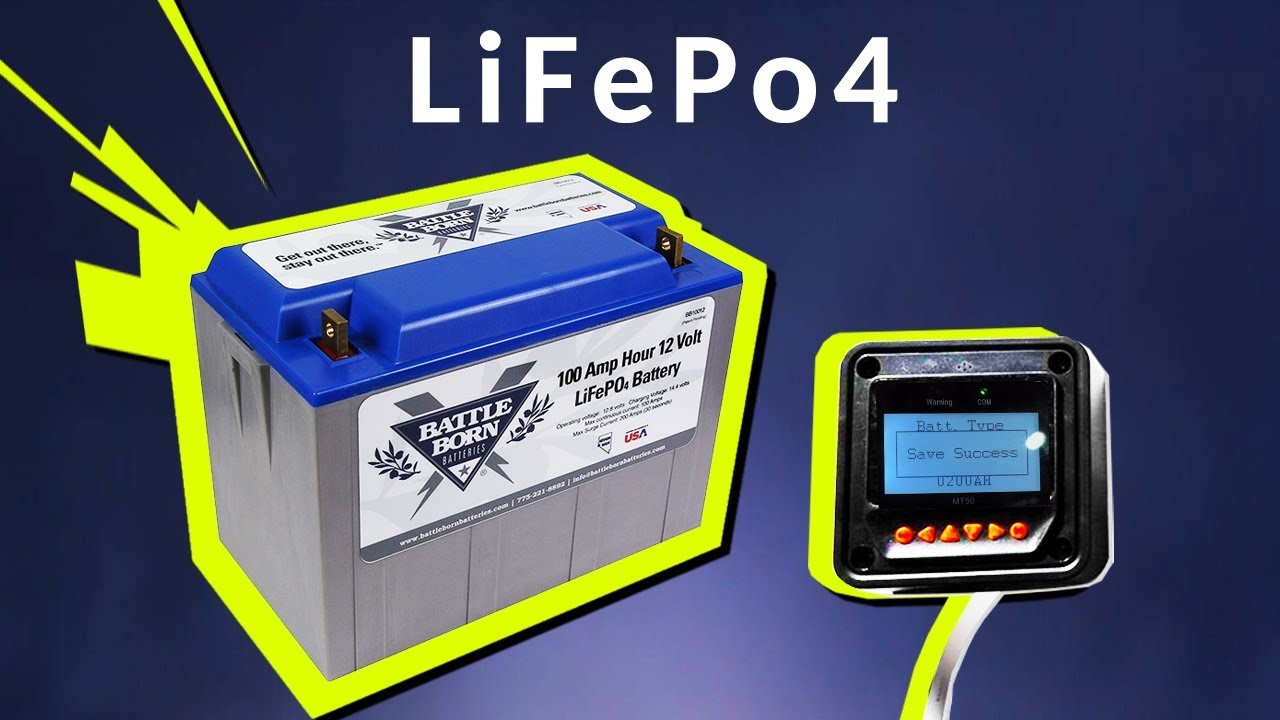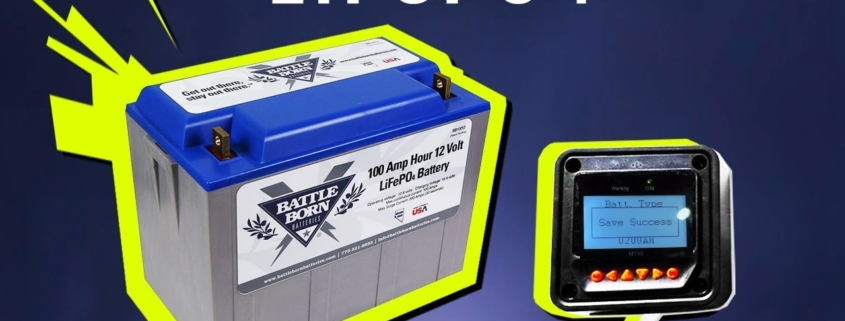Ultimate guide: solar charge controller settings for lifepo4 batteries
Are you looking for the ultimate guide to setting up a solar charge controller for your lifepo4 batteries? You’ve come to the right place. This article will provide essential information about successfully setting up and maintaining your solar charge controller system. We’ll discuss the various settings and configurations and provide tips on troubleshooting any problems that may arise. By the end of this guide, you’ll have the knowledge and confidence to keep your system running efficiently.

What is a Solar Charge Controller?
What a solar charge controller is and how it works?
A solar charge controller is an electronic device that controls how much power is sent from a solar panel to a battery. Both overcharging and the reversal of current flow from the battery back into the solar panel are prevented. The battery is powered until it reaches its highest voltage level. At this point, the current flow is reduced to avoid overcharging. This system then alternates between charging and float modes.
The benefits of using a solar charge controller.
The solar charge controller is an essential component of any photovoltaic system. Here are some of the key benefits of using a solar charge controller:
1. Longer Battery Life: With a solar charge controller, your batteries can be protected due to excessive charging or discharging, resulting in shorter lifespans and more frequent replacements. By regulating the current flowing into and out of them, a solar charge controller ensures that your batteries last longer and need fewer replacements.
2. Energy Efficiency: A solar charge controller helps you make the most out of your photovoltaic system by efficiently managing energy flow from the panels to the battery bank. This helps ensure maximum power is extracted from each panel, thus increasing energy yields over time.
3. System Protection: Solar controllers act as an “on-off” switch for your battery bank. When it detects high voltage levels or low temperatures, it will shut off power flow to prevent damage within the system or its components, such as inverters or chargers. They can also help protect your battery life by avoiding deep discharges, which could lead to permanent cell damage.
4. Cost Savings: The consistent use of a solar charge controller offers significant cost savings in terms of maintenance costs due to its ability to regulate current flow and extend battery life between replacements – meaning fewer costly repairs or replacement cycles!
The different types of charge controllers.
There are two main types of solar charge controllers: pulse width modulation (PWM) and maximum power point tracking (MPPT). PWM charge controllers are more affordable but can’t extract as much energy from the solar panel as MPPT controllers. MPPT controllers, on the other hand, are more expensive but provide more efficiency by tracking the maximum power from the solar panel to get the most out of it. Depending on your budget and needs, either one of these types can be suitable for your solar power system.
What are LiFePO4 Batteries?
LiFePO4 stands for Lithium Iron Phosphate, the chemical composition of the battery’s cathode material. This type of battery has a higher voltage than other lithium-ion battery chemistries, making it ideal for applications where power delivery is essential such as electric vehicles or solar energy storage systems.
The benefits of using LiFePO4 batteries in a solar system.
LiptFePO4 batteries are an excellent option for solar systems because of their benefits of having a high energy density, a long life cycle, and a low self-discharge rate. They are perfect for storing energy since they hold more of it and can be charged and released more quickly. They may last up to 10 years or longer than other batteries, giving them a longer life cycle that lessens the need for replacement over time. Because of this, they represent a fantastic choice for anyone who wants to save money over the long term.
The difference between LiFePO4 batteries and other types of batteries.
LiFePO4 stands for lithium iron phosphate – an advanced lithium battery with unique benefits over other options like lead acid or nickel-based chemistries. First, LiFePO4 batteries offer significantly longer lifespans than traditional alternatives – up to 2000 charge cycles when used regularly. They also have a much higher power density, which is essential for powering vehicles because it allows for high-voltage operation and quicker acceleration. Finally, they don’t suffer from the same deep discharge issues that plague other batteries. They can last long periods without use and without losing their ability to hold a charge.
Understanding Solar Charge Controller Settings for LiFePO4 Batteries
Three main settings must be considered: voltage, current, and temperature.
The most crucial factor is the voltage setting, which determines how much power is delivered to the battery during charging. A common rule of thumb is to select a voltage slightly higher than the manufacturer’s recommended level and then adjust as necessary. Generally speaking, a lower voltage setting will ensure longer life but may need to provide more energy for full-capacity charging.
The current setting dictates how much power can be supplied by the charger at any given time. This should be set between 15-20% of your battery’s maximum rated current and adjusted according to usage patterns. If you discharge your battery quickly, you may need to increase this value slightly to get more power out of your system without overcharging it.
Finally, when using lithium batteries in particular, it’s essential to pay close attention to their temperature while being charged. High temperatures can cause permanent damage or even fires in some cases, so it’s important to avoid overcharging at all costs. To mitigate this risk, many controllers have built-in temperature sensors or feature adjustable safety thresholds that can help protect against excessive heat buildup during charging cycles.
How changing these settings can impact the performance of a LiFePO4 battery?
When using a LiFePO4 battery, the voltage, current and temperature settings can significantly impact its performance. Setting the proper parameters will ensure that your battery operates at optimum performance while setting the wrong parameters could cause it to fail prematurely or not work at all.
The voltage of a LiFePO4 battery should be within its rated range for the best performance. This is usually between 3V – 3.65V with an optimal value of 3.2-3.3V per cell for lithium iron phosphate batteries in series connection. If the voltage is too low, the cell’s internal resistance increases and causes poor charging efficiency and a higher self-discharge rate. Similarly, managing current correctly is crucial in maintaining optimal battery health. If too much current is drawn from the battery at once, it could cause permanent damage or even result in a fire hazard. If it’s too high, the cell may overheat or enter thermal runaway resulting in permanent damage to the cell itself or even risk of fire/explosion from gas buildup inside it.
The importance of finding the correct settings for specific battery and solar panel setups.
As with any energy system, it is essential to ensure that all components are correctly configured to maximize efficiency and minimize wasted power. When selecting settings, factors such as sun exposure and energy usage should be considered, as well as the appropriate charge controller setting and inverter size. Additionally, batteries should be chosen with enough capacity to meet the needs of different weather types.
How to Choose the Right Solar Charge Controller for LiFePO4 Batteries?
Modern controllers are designed to work with LiFePO4 batteries. And the maximum current rating of the solar charge controller should match or exceed the total current draw from all connected photovoltaic (PV) panels. Features such as temperature compensation and overcharge protection should also be provided to ensure the battery stays healthy and lasts longer. Especially when using the system in extreme temperatures or harsh environments.
Conclusion
Setting the correct solar charge controller settings for LiFePO4 batteries may seem complex. Still, with the proper guidance and information, any individual can master it. With this in mind, this ultimate guide has helped provide you with all the necessary information to understand and set up your solar charge controller settings correctly.








